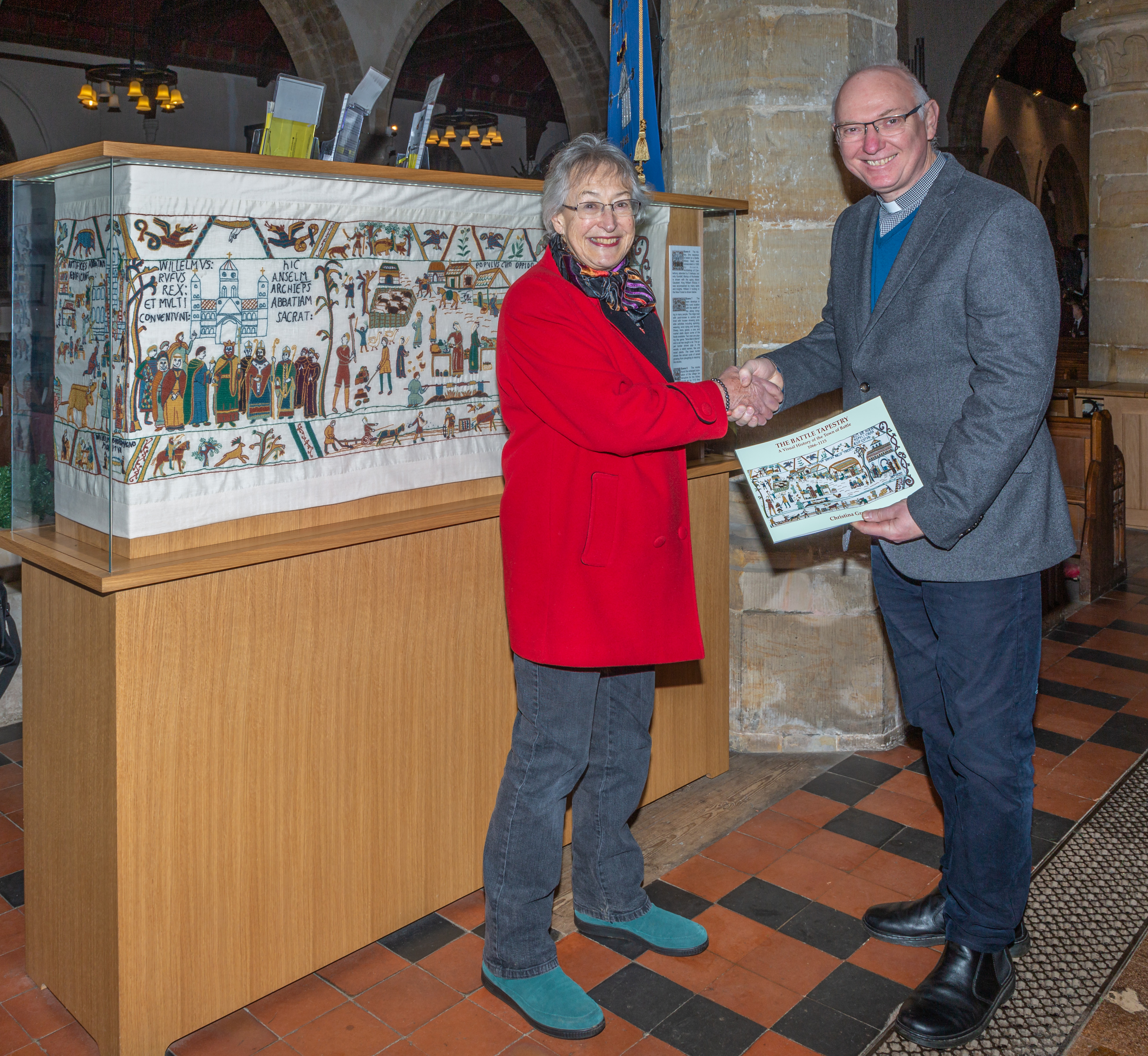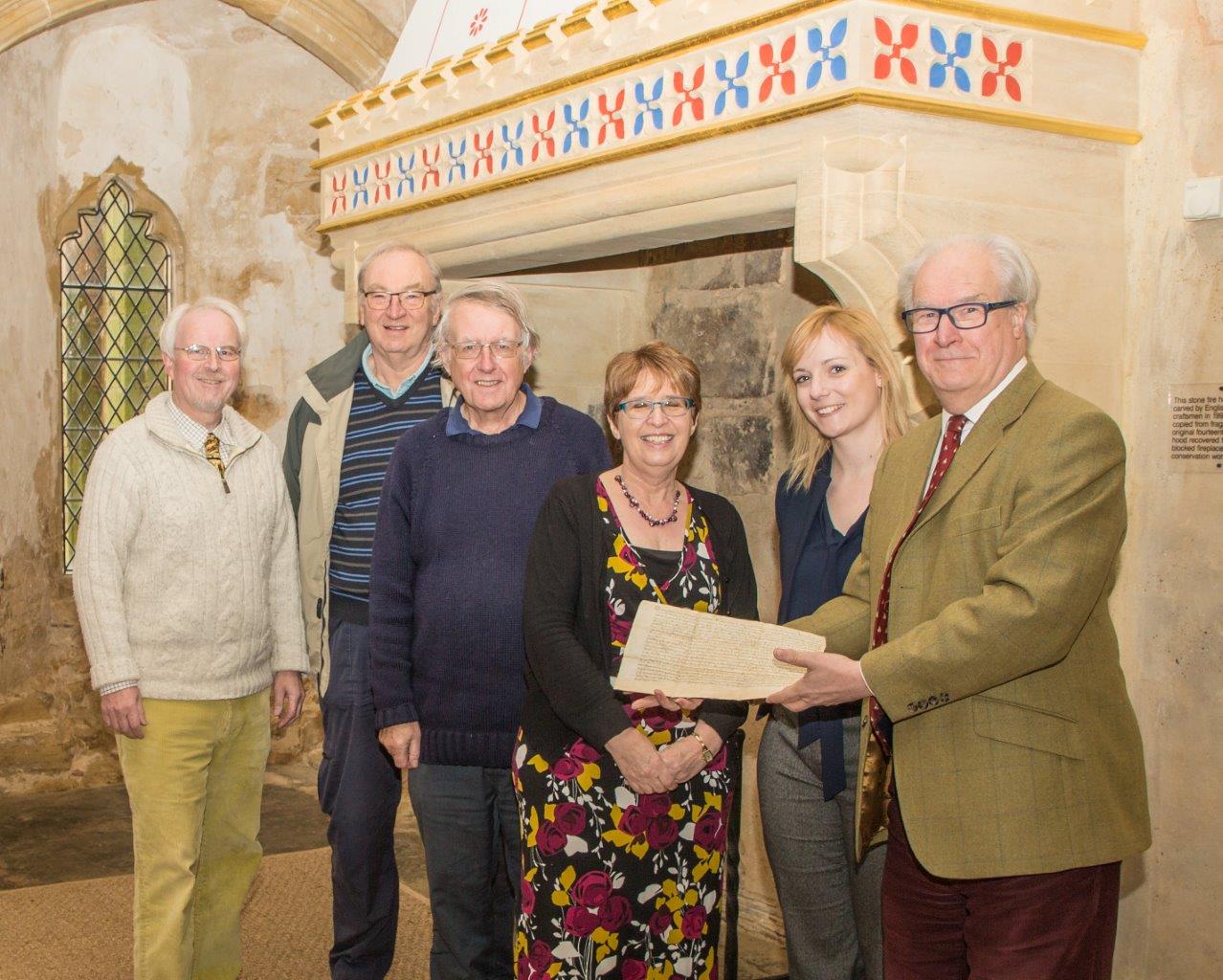News
HISTORY NEWSLETTER JUNE 2025
Next Lecture
The next talk is ‘James Burton: a zealous investigator in Egypt of its antiquities’ by Stephen Howard Gray at 7.30 pm on Thursday 19 June, Wynne Room, Battle Memorial Hall. A video of the lecture will be circulated soon after on the Society’s private YouTube channel.
Date for the Diary : ‘Women in Intelligence’ by Helen Fry at 7.30 pm on Thursday 17 July in Battle Memorial Hall. Full details of this year’s programme are available here.
Society Facebook Page
Don’t forget to check out the BDHS Facebook page. For those who are Facebook users, please find it at https://facebook.com/BattleHistorySociety or by searching for Battle and District Historical Society when logged into your Facebook account. Remember to like and follow the page to get notification of our posts.
Battle Museum
The Museum is now open for the season – why not pop in and see what is new? There are still vacancies for volunteers, so you are interested in volunteering this season, please make contact via the museum website http://www.battlemuseum.com.
La Mora Tapestry
Don’t miss your chance to be part of the La Mora Tapestry. Sessions are at Battle Library as follows:
1.00-5.00 pm Fridays
10.00-2.00 pm Saturdays
Christina Greene and her fellow stitchers have already finished the first section and the second section has begun already!
History in the News
Local History Hub: in a new digital archive project, English Heritage have made available historical photographs and stories. Nearly 400 locations across every county, city, district, and major town in England feature on dedicated pages. It is intended to add further material over time, aiming to make local histories ‘more relevant, relatable and engaging’. The hub will offer content including aerial photographs, curated selections of listed buildings, videos, blogs and podcasts.
Military Intelligence exhibition for Blitz Tunnels: the history of military intelligence will be explored as part of a planned tourist attraction in London’s World War Two air raid shelter tunnels. About 8,000 sq m of tunnels under High Holborn were built in 1942 to provide protection during the Blitz; they were later used as a home for a British spy organisation. London Tunnels are collaborating with the Museum of Military intelligence to showcase original artefacts, equipment, weapons and documents.
The Roman massacre that did not happen: skeletons discovered in 1936 in a ‘war cemetery’ at Maiden Castle, a large Iron Age hill fort, had assumed to be victims of the Romans. However, Dr Miles Russell explains that new evidence points to this being untrue. Instead, it was a case of Britons killing Britons in periods of lethal violence spanning multiple generations. It is suggestive of episodic periods of bloodshed, possibly the result of localised turmoil, executions or dynastic infighting during the decades leading up to the Roman conquest.
‘Holy Grail of Shipwrecks’: researchers believe that they have found the Spanish galleon San Jose, which was transporting an estimated £16 billion treasure trove and was sunk off the coast of Cartagena, Columbia, by the Royal Navy in 1708. The ship’s sinking severely hampered the Spanish financing their forces in the War of the Spanish Succession, which ended with Britain gaining Gibraltar, Newfoundland and Nova Scotia. Underwater drones have shown images of silver coins, Chinese porcelain and inscriptions on cannons dating from 1665. Cobs created in 1707 at the Lima mint points to a vessel navigating the Tierra Firme route in the early 18th century. The San Jose is the only ship that matches these characteristics. Claims to the treasure have been made by Colombia, Spain, Peru, indigenous communities in the area, descendants of the miners who dug up the treasure, among others. The ship’s cargo will not be recovered from the seafloor until the wreckage is ‘fully characterised’ using ‘non-invasive surveys’. This will take time: the galleon is lying several hundred meters below the sea surface, too deep for human exploration.
Viking woman burial: the burial was discovered when detectorists came across partially exposed bronze brooches in the dirt in Norway’s remote Senja Island in 2023. The woman was laid to rest over 1100 years ago, in a 5.5m-long burial ship, roughly in the middle with her head facing north, along with a pet dog and artefacts such as bronze brooches, spindle whorls and weaving and agricultural tools. The remains of the dog were found carefully placed at the feet of the deceased. Such burials were reserved for the elite. Researchers believe it is most likely that she was an important figure in the community, perhaps across the region, with a high social status.
Other history articles in the press: If any member spots an interesting history article, just email a scan of it to bdhs66@yahoo.co.uk and we’ll feature an edited version of it in the next Newsletter.
Online Archive Update – September 2021
Exciting news! We now have a great new resource available online. The original Battle Town Index, identified by advisers from the National Archives as potentially the most important item in our archive, was recorded on a series of Index cards. Members of our Society started the Index with the aim of recording information on the use and occupants of all the buildings in the town centre. Information, gleaned mainly from trade and other directories, was recorded up to the early 1990s. The online version of the Index has been edited so that beyond 1940 only information on businesses and a few private individuals reasonably assumed now dead have been included in the online version. This complies with the recommendations of the National Archives on publication of material which is covered by the Data Protection Act. It still, however, provides a wealth of information and is found in our online archive as a series of searchable .pdf files. Go to our archive page The Battle & District Historical Society Archives http://bdhsarchives.com and search for Battle Town Index to see the available .pdf files. When you have downloaded the file you can find the search function by clicking on the magnifying glass symbol and entering your search term.
Website news
The British Library is going to archive our website in the UK Web Archive and to make it publicly available via that route. The UK Web Archive was established in 2004 to capture and archive websites from the UK domain and across the web, responding to the challenge of a digital black hole in the nations memory. It contains specially selected websites that represent different aspects of UK heritage on the web, as well as important global events. We work closely with leading international institutions to collect and permanently preserve the web, and the open UK Web Archive can be seen at http://www.webarchive.org.uk/.
Also an on-line version of the BDHS Journal for 2019 has been added – see Previous BDHS Journals
Meet our new President
Our new President, Professor David Bates, gave his inaugural lecture entitled ‘Writing a Biography of William the Conqueror’ at a very well attended meeting on 16 January. His presentation was well received and afterwards David had the opportunity to meet many members of the Society and be photographed with all members of the BDHS Committee. He also gave another lecture – by Zoom on 15th October. This was about ‘New thoughts on the Bayeux Tapestry’.

Meeting with the new Dean of Battle
The new Dean of Battle, the Very Reverend Lee Duckett, together with his wife Ange, has been presented with some books from BDHS members Keith Foord and Tina Greene, which are concerned with the Church and the Battle Tapestry, currently on display there. BDHS hopes to develop some mutually beneficial projects based on the church’s archives and the use of the church environmental space for exhibitions etc..


The Dark Ages’ greatest Christmas relics were at Battle Abbey
The Guardian and other media have reported that a medieval manuscript listing Battle Abbey’s relics has been analysed and transcribed for the first time by English Heritage historian Michael Carter. It reveals that the relics were the most prestigious given to any abbey, more significant even than those at Westminster Abbey.
A report on this can be found at https://www.theguardian.com/culture/2019/dec/18/a-bit-of-manger-st-nicholass-bone-the-dark-ages-greatest-christmas-relics.Michael Carter’s paper can also be found in full using this reference: Carter, M: The Relics of Battle Abbey: A Fifteenth-Century Inventory at The Huntington Library, San Marino The Journal of Medieval Monastic Studies 8 (2019)
Video: The Battle of Hastings. No – the Battle of Battle!!
BDHS Members Michael Hodge, Alan Judd and Peter Greene, working in close cooperation with Natasha Williams of English Heritage, have produced a video explaining where the Battle of Hastings actually took place and why we have a town called Battle. The video has been released by Mirador Television and can be found via Youtube link: https://www.youtube.com/watch?v=eDe8uyKXL9Y
Amazing find by BDHS
In the process of changing over BDHS archivists Gina Doherty and David Sawyer unexpectedly turned up an old small parchment that appeared to originate from Abbot Richard Tovey of Battle Abbey in 1493. Christopher Whittick of ESRO confirmed its authenticity This is a ‘pass’ entitling the carrier to travel freely in England and quoting the old charter rights of the abbey. Gina has produced an excellent summary of this find which can be read in Section A3.4 of Collectanea. BDHS has also given a facsimile copy to Battle Abbey for future display.

L-R: Neil Clephane-Cameron, Keith Foord, George Kiloh, Gina Doherty, Natasha Williams (English Heritage) handing the parchment to Christopher Whittick (Vice-President of BDHS). Picture Peter Greene